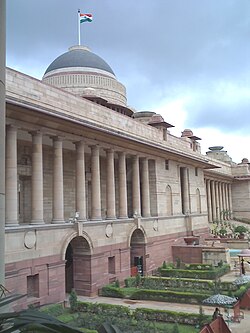A Government House is any residence used by governors-general, governors and lieutenant-governors in the Commonwealth and the British Empire. Government Houses serve as the venue for governors' official business, as well as the many receptions and functions hosted by the occupant. Sometimes, the term Government House is used as a metonym for the governor or his office.
Contents
- Africa
- South Africa
- Americas
- Atlantic
- Canada
- Caribbean and the West Indies
- South America
- Asia
- British Indian Empire
- Middle East
- Europe
- Ireland
- Oceania
- Australia
- New Zealand
- South Pacific
- See also
While a Government House is the official residence of a viceroy or governor who represents the monarch, many Commonwealth nations now operate without the British monarch as head of state. To avoid confusion, several of these nations refer to their presidential palaces as a State House or President's House .
When King Charles III or a member of the royal family visits a Commonwealth nation, they will often stay at the Government House, which is reported in the Court Circular. This privilege is sometimes extended to other dignitaries, but usually arrangements are made for important non-royal visitors to be accommodated at hotels, or in accommodations provided by their own country's embassy or consulate.









